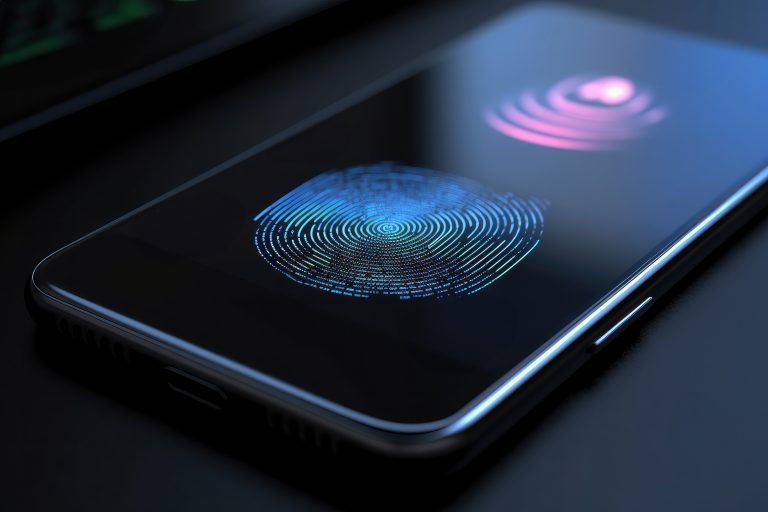Navigating Privacy Settings on Social Media Platforms
December 12, 2023Social media has become a ubiquitous aspect of daily life, making the management of privacy settings increasingly vital. This article…

In today’s digital age, safeguarding personal information from cybercriminals is paramount, and encryption is vital in achieving this goal. Encryption involves transforming plain text data into code, rendering it indecipherable without the appropriate decryption key. Its primary role is to ensure data confidentiality, integrity, and authenticity through complex algorithms that scramble data, making it inaccessible to unauthorized individuals. Encryption plays a pivotal role in safeguarding personal information by securing data during transmission over the internet, protecting data at rest on devices or servers, and preventing unauthorized access.
Various encryption methods protect personal information, including symmetric encryption, asymmetric encryption, and hashing. Each method possesses distinct features but shares the common objective of data protection. Encryption finds application in diverse scenarios, such as securing communication channels (e.g., email, instant messaging, voice calls) to prevent eavesdropping, safeguarding online transactions (e.g., online banking, shopping) by securing financial and personal data, and protecting sensitive information like medical records, social security numbers, and personal identification data from unauthorized access.
While encryption is effective, it is not without risks, including software malfunctions, potential hacker misuse, and legal concerns related to data decryption by authorities. To bolster personal information security, individuals should adopt best practices such as employing strong passwords as the initial line of defense, regularly updating encryption software and security measures to keep them current, and exercising caution when dealing with suspicious emails and websites that may contain malware capable of bypassing encryption and compromising personal data. In summary, encryption is instrumental in shielding personal information from unauthorized access, interception, or misuse, enabling individuals to maintain their digital privacy.
Encryption is a vital process to safeguard personal information and prevent unauthorized access. It converts data into a code that can only be decoded with the correct encryption key. This ensures that even if data is intercepted, it remains unreadable to anyone without the key. Encryption protects sensitive information such as passwords, credit card numbers, and personal messages. It is utilized in various contexts, including online transactions, communication platforms, and data storage systems, to ensure privacy and security. With encryption, individuals have control over who can access their information, providing an additional layer of protection.
In the contemporary digital landscape, safeguarding personal information has become a paramount concern due to the prevalence of online interactions and the increasing sophistication of cyber threats. One potent and indispensable tool for achieving this crucial objective is encryption.
To ensure the protection of personal information from unauthorized access, it is crucial to secure data in transit. This involves taking several steps to guarantee the safe transmission of data.
One fundamental measure is the utilization of encryption protocols like HTTPS or SSL/TLS when sending data over the internet. These protocols employ advanced encryption techniques to safeguard data during transmission. Additionally, verifying the authenticity of the recipient’s server certificate is paramount to prevent man-in-the-middle attacks, which can intercept data in transit. By confirming the legitimacy of the server certificate, users can ensure the integrity of their connections.
Another precautionary step is to avoid connecting to public Wi-Fi networks, which can be vulnerable to security breaches. Instead, a Virtual Private Network (VPN) can provide an extra layer of security by encrypting data before it leaves the device, thereby shielding it from potential eavesdropping.
Regularly updating software and device firmware is essential to patch any vulnerabilities cybercriminals might exploit. Moreover, implementing strong authentication methods, such as two-factor authentication, ensures secure access, even if login credentials are compromised.
Notably, the revelations made by Edward Snowden in 2013 regarding mass surveillance programs conducted by the NSA shed light on the significance of securing data in transit. This revelation ignited a global discourse on privacy and encryption, emphasizing the need for robust measures to protect personal information.
Ensuring data protection at rest involves several steps to safeguard sensitive information stored on devices or servers. These precautions help mitigate the risks associated with unauthorized access or data breaches.
One fundamental measure is to encrypt files and folders using encryption software or built-in operating system tools. Encryption renders data unreadable without the appropriate decryption key, providing a formidable layer of defense. Employing strong and unique passwords for securing encrypted files further enhances data protection.
Storing encrypted data on secure and encrypted storage devices, such as external hard drives or USB flash drives, adds an extra layer of security. Regularly updating encryption software and the operating system is essential to address any vulnerabilities attackers might exploit.
Access controls and permissions are vital components of data protection. By implementing these measures, individuals can limit who can view or modify sensitive information. Additional security layers, like two-factor authentication, can be considered for further safeguarding encrypted data. Regular data backups prevent loss in case of hardware failure or data corruption, ensuring data resilience.
Properly disposing of encrypted data, whether by securely deleting it or physically destroying the storage device when it is no longer needed, ensures that sensitive information does not fall into the wrong hands.
Preventing unauthorized access to encrypted data is a crucial aspect of data security. Several steps can be taken when using encryption to protect personal information:
Strong authentication measures, such as multi-factor authentication, ensure only authorized individuals can access the data. Multi-factor authentication requires users to provide multiple forms of identification, significantly enhancing security.
Access controls and permissions limit who can view or modify sensitive information. By assigning appropriate access rights, organizations can restrict access to only those who require it for their roles.
Regularly updating encryption algorithms and protocols is essential to avoid potential vulnerabilities. Security is an ever-evolving field; staying current with encryption technologies is vital to maintaining protection.
Encrypting data at rest and in transit ensures that it remains secure at all times, whether stored or transmitted.
For instance, a company implementing encryption and access controls to protect customer data is a real-world example of data security. These measures ensured that the encrypted information remained unreadable even if a hacker accessed the database, preventing unauthorized use.
Encryption is undeniably a cornerstone of safeguarding personal information in today’s digital age. It is a formidable shield against unauthorized access, ensuring that sensitive data remains confidential and secure. Nevertheless, it’s essential to recognize that not all encryption methods are created equal, and their effectiveness can vary significantly.
Symmetric encryption is a robust method that employs the same key for both encryption and decryption processes. This encryption technique is a vital component of data security. It involves the following steps:
Asymmetric encryption is a pivotal technique for safeguarding personal information, offering enhanced security through the use of key pairs. This encryption method involves the following steps:
In the annals of encryption history, the advent of asymmetric encryption can be attributed to the pioneering work of Whitfield Diffie and Martin Hellman in 1976. Their groundbreaking contributions revolutionized data security, laying the foundation for secure communication across the internet.
Hashing is a cryptographic technique with applications in data integrity and verification. This process transforms data into a fixed-length string of characters known as a hash value. Hashing is pivotal in encryption and data security and involves the following stages:
Hashing finds wide-ranging applications, including password storage, digital signature creation, and data integrity verification during transmission. It is a secure and efficient means of protecting personal information in the digital age.
In the current digital landscape, the security of personal information has become a paramount concern for individuals, organizations, and governments alike. With the increasing prevalence of data breaches, cyberattacks, and identity theft, the need to protect sensitive information from falling into the wrong hands has never been more critical. In response to these threats, encryption has emerged as a fundamental and indispensable tool in cybersecurity.
Secure communication is paramount for the protection of personal information. To ensure secure communication, several steps should be followed. First and foremost, it’s crucial to utilize end-to-end encryption when communicating. This can be achieved using messaging apps or email services that employ end-to-end encryption, such as Signal or ProtonMail. Additionally, verifying contact information before sharing sensitive data is essential to avoid potential impersonation. Public Wi-Fi networks should be approached cautiously, as they may be vulnerable to interception of sensitive data. Regularly updating devices and communication apps is another critical step to benefit from the latest security patches. Adding an extra layer of security by enabling two-factor authentication for communication accounts enhances protection significantly.
For secure online transactions, certain precautions should be taken. Shopping only on secure websites with HTTPS and a lock symbol in the address bar is advisable. Another key step is to choose secure payment methods, such as trusted platforms like PayPal or credit cards, with fraud protection. When making online purchases, avoiding sharing unnecessary personal information is essential. Keeping software up to date is crucial, including the operating system, web browser, and antivirus software. Furthermore, using strong and unique passwords for each online account and enabling two-factor authentication when available enhances security. It’s wise to double-check the legitimacy of websites and read reviews before making online transactions. Vigilance is key in protecting personal and financial information during online shopping.
The protection of sensitive data requires a multi-faceted approach. Strong access controls are fundamental; limiting access to sensitive data to authorized personnel through user authentication and role-based access controls enhances security. Encrypting data at rest is crucial, ensuring that data stored on devices, servers, or databases remains unreadable even if accessed. Similarly, securing data in transit is equally important, achieved by encrypting data transmitted over networks using protocols like SSL/TLS. Regularly updating security measures, including software, operating systems, and security tools, is essential to address vulnerabilities and protect against emerging threats. Additionally, it is vital to educate employees on best practices for handling sensitive data and training them to recognize and avoid potential threats. Conducting vulnerability assessments and penetration testing regularly is a proactive step to identify weaknesses and strengthen data protection measures effectively.
While encryption is a powerful tool for protecting personal information, it has potential risks.
Encryption systems can experience malfunctions or failures, which could lead to data loss or unauthorized access. To mitigate these risks, individuals can take certain steps. Regularly backing up encrypted data ensures redundancy in case of a failure. Keeping encryption software and systems up to date is crucial to address known vulnerabilities. Testing the encryption process regularly helps identify potential issues or weaknesses. Implementing strong access controls and authentication measures prevents unauthorized access. Monitoring encryption systems and networks for signs of malfunction or failure allows for timely responses. A contingency plan helps quickly respond and recover in a malfunction or failure.
Hackers can misuse encryption, attempting to bypass or exploit it to gain unauthorized access to confidential data. They may employ advanced techniques like brute force attacks, exploit vulnerabilities in encryption algorithms, or target weak passwords. Additionally, hackers can intercept encrypted data during transmission and decrypt it later. To mitigate this risk, individuals and organizations should implement strong encryption protocols, regularly update their software and security measures, and remain vigilant against suspicious emails and websites that attempt to deceive them into revealing sensitive information.
Legal issues related to encryption can arise for various reasons. To effectively navigate these issues, individuals should consider the following steps. Staying informed about the legal landscape regarding encryption in their jurisdiction is essential. Understanding the laws and regulations related to encryption, such as data privacy and security laws, helps ensure compliance. Keeping abreast of any changes or updates to encryption laws that may impact their use of encryption is crucial. Consulting with legal professionals for guidance and advice on encryption-related legal matters is recommended.
With the increasing prevalence of cyber-attacks, data breaches, and the constant exchange of sensitive data over the internet, individuals and organizations face significant risks. In this landscape, it has become not just advisable but crucial for individuals to take proactive measures to safeguard their personal information. Encryption is one of the most effective and widely adopted methods.
The use of strong passwords stands as a critical defense against unauthorized access to personal information. Creating strong passwords involves several steps to enhance security:
It is essential to adhere to best practices for generating robust passwords, including combining uppercase and lowercase letters, numbers, and special characters. This complexity makes passwords significantly harder to crack.
Avoiding the inclusion of easily accessible personal information such as birthdays, names, or common phrases is essential. Cybercriminals often exploit readily available information to guess passwords.
Length is crucial, so it is advisable to create passwords at least eight characters long. Longer passwords offer increased security.
Using unique passwords for each account is a fundamental aspect of password security. Reusing passwords across multiple accounts increases vulnerability, as a breach in one account could compromise others.
Regularly updating software and security measures is indispensable for maintaining effective encryption and safeguarding personal information. Adopting a proactive approach to software and security updates involves several key steps:
Enabling automatic updates for critical components such as the operating system and antivirus software ensures that security patches and fixes are applied promptly.
Regularly checking for software updates from trusted sources and installing them promptly helps address vulnerabilities and strengthen security.
Keeping the firewall enabled and regularly updating its settings ensures additional protection against threats.
Routine password updates, alongside the use of strong and unique passwords for each account, are essential practices in enhancing security.
Exercising caution when downloading and installing software or apps from unfamiliar or unverified sources helps prevent the installation of malicious software.
Educating oneself about the latest security best practices and staying informed about potential threats enables individuals to adapt their security measures effectively.
By following these steps, individuals can substantially bolster the security of their personal information, reducing the risk of unauthorized access or data breaches. A proactive approach, centered on regular updates and security measures, is essential to ensuring continuous protection.
Exercising caution when encountering suspicious emails and websites is pivotal in safeguarding personal information. The following steps should be taken to minimize risks:
Verification of the sender is essential; individuals should scrutinize the email address and be vigilant for any indications of phishing or spoofing attempts.
Thinking before clicking is a fundamental rule; avoiding clicking links or downloading attachments from unknown sources significantly reduces the risk of malware infection or phishing attacks.
Caution should be exercised when confronted with urgent or threatening messages; cybercriminals often exploit fear tactics to manipulate recipients into taking immediate actions that compromise security.
Identifying red flags, such as poor grammar, spelling errors, or generic email greetings, can indicate suspicious content.
Regularly updating operating systems, antivirus software, and web browsers to patch security vulnerabilities is vital.
Using strong and unique passwords that combine letters, numbers, and symbols adds an extra layer of protection.
Enabling two-factor authentication provides additional security by necessitating a second form of verification.
Encryption is a vital component in protecting personal information from unauthorized access. By utilizing sophisticated algorithms, encryption converts data into an unreadable form, effectively safeguarding sensitive details like financial information, passwords, and personal identification. This powerful tool ensures the confidentiality and integrity of personal data, preventing data breaches and identity theft. Encryption is crucial in securing our digital lives and privacy as our world becomes more interconnected. In today’s landscape of increasing cyber threats and data breaches, encryption is indispensable in fortifying our defenses and ensuring the security of our online interactions. With the growing reliance on digital platforms for communication, commerce, and information sharing, encryption remains a fundamental pillar of cybersecurity, empowering individuals to take control of their data and shield it from malicious actors seeking unauthorized access.

Social media has become a ubiquitous aspect of daily life, making the management of privacy settings increasingly vital. This article…

Facebook, with its 2.85 billion users, is a major player in the digital world. Despite its popularity, concerns about data…

Removing personal data from mobile devices is vital for privacy and security. Smartphones and tablets store extensive personal information; this…